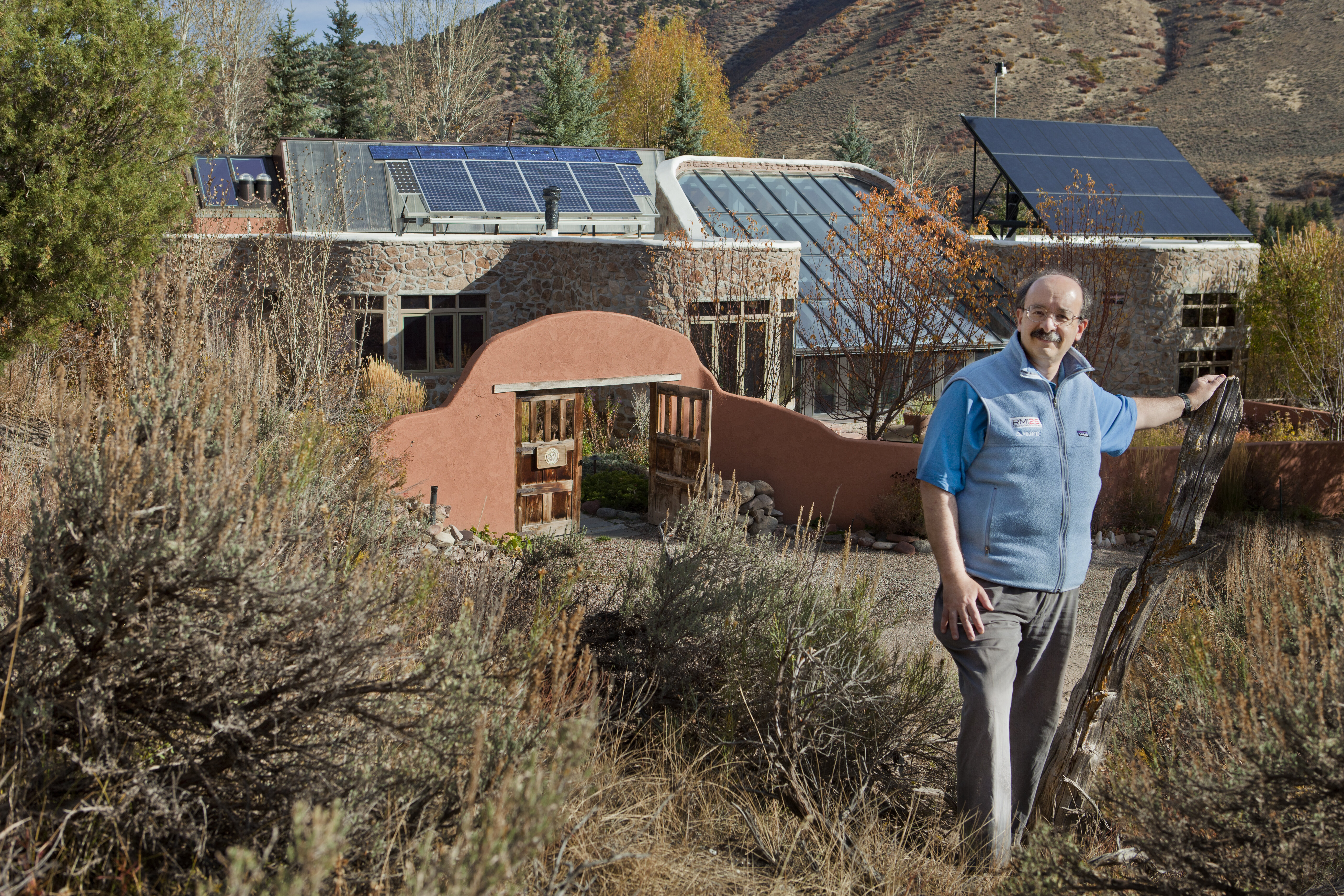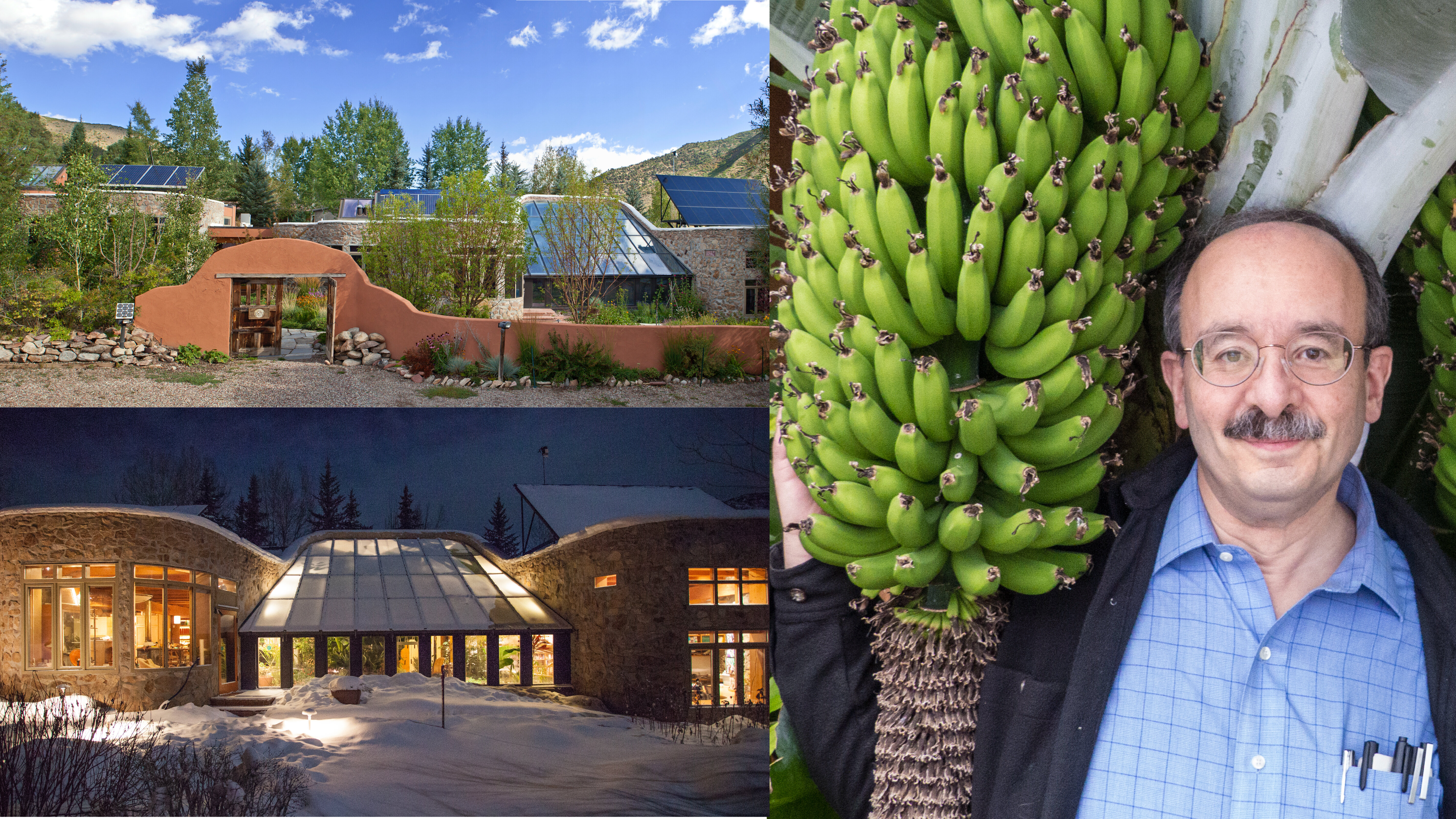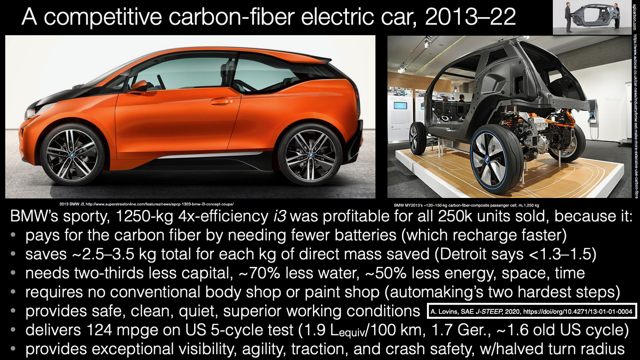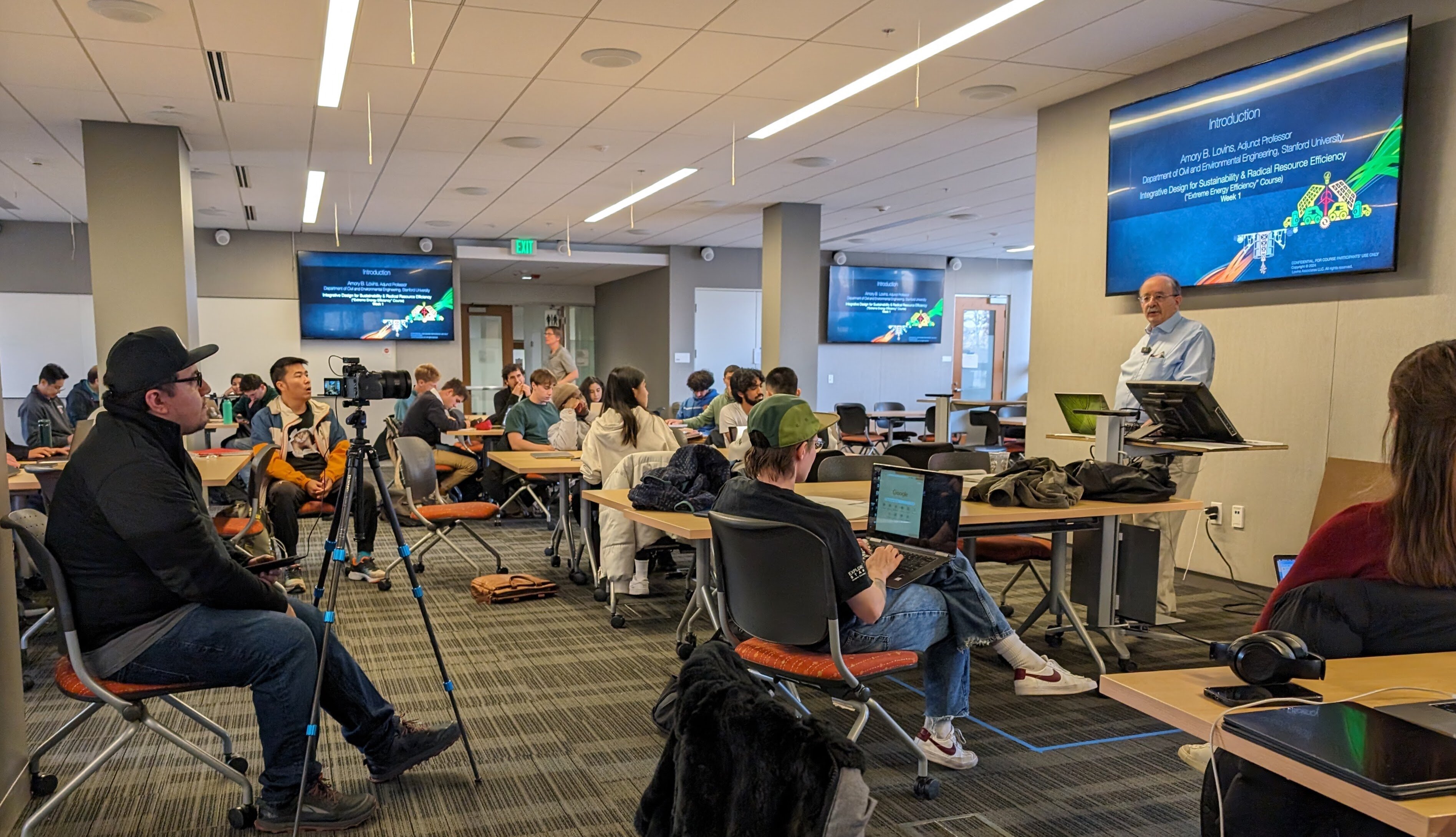af Magazine
~The Asahi Glass Foundation’s web magazine on the global environment~


Renewable Energy is Booming Globally: Dr. Lovins Urges Japan to Lead in Efficiency and Transition
Dr. Amory B. Lovins, a 2007 Blue Planet Prize laureate and physicist whose innovative energy strategies and technologies have shaped the world for nearly five decades, has advised governments and companies in over 70 countries, including Japan. His expertise has been instrumental in improving energy efficiency and fostering the transition to renewable energy. Known for his deep understanding of Japan's energy landscape, we interviewed Dr. Lovins (on February 6, 2024) to discuss the future of energy utilization.
Renewable energy surges globally, with China leading the charge

Cofounder of RMI (founded as Rocky Mountain Institute)
Adjunct Professor of Civil and Environmental Engineering at Stanford University
The international community increasingly recognizes the importance of an energy-focused approach to reduce greenhouse gas emissions. In November-December 2023, during the 28th Conference of the Parties to the UN Framework Convention on Climate Change (COP28), over 120 countries, including Japan, adopted a document with ambitious content. This document pledges to "triple renewable energy capacity globally and double the global average annual rate of energy efficiency improvements by 2030."
Physicist Dr. Amory B. Lovins, who in the 1970s envisioned current energy trends and pioneered related concepts and methodologies, offers a hopeful perspective. With over 50 years of experience in energy sustainability, Dr. Lovins believes the world can achieve those COP28 goals even before 2030.
In 2023, a staggering 90% of newly added global power capacity came from renewable sources, totaling an impressive 507 gigawatts (according to the International Energy Agency just before another 30 GW were reported). Dr. Lovins emphasizes the exponential growth in renewable power: the IEA forecasts that 25% of the world's electricity will come from solar and wind power, and 42% from all renewable sources.
This surge is primarily driven by the significant cost reduction of renewable energy generation. Dr. Lovins explains that the most cost-effective electricity globally combines solar photovoltaic (PV) with wind power, and often is supplemented by other renewables and storage. Notably, China accounted for over half of the 500+ gigawatts of additional renewable capacity added last year. Even with access to inexpensive coal, China's solar PV and wind power capacity produce cheaper electricity, so they added 286 gigawatts of capacity in 2023, vs. 40 gigawatts of coal capacity that will rarely run, and 1 gigawatt of nuclear capacity.
In contrast, renewable energy in Japan lags behind the global surge. Despite renewables' accounting for 21.7% of the electricity mix in fiscal year 2022, the incremental growth has fallen short. Solar PV increased by 6.5 gigawatts and wind power by 0.6 gigawatts, a pace that doesn't correspond to the global urgency. Dr. Amory Lovins attributes this to policy limitations hindering renewable energy advancement, citing long-standing structures favoring established power companies' legacy assets as a primary barrier.
One key example is the transmission challenge: Regional transmission is owned by major electricity providers, whose grid operators can refuse to accept renewable energy, at any time, for any reason or no reason. Then the renewable electricity cannot fairly compete with the same owners' thermal stations. Without the opportunity to earn reliable income, renewables become harder and costlier to finance.
Dr. Lovins argues, "While acknowledging the technical strengths of Japan's major power companies, I observe that their focus has been, understandably, on maximizing returns from past investments. For the greater good of Japan, and their own long-term success, these companies should be leading the shift to new renewable energy sources--enabling the new energy system, not protecting the old one."
Optimizing buildings and cars as total energy systems

Dr. Amory Lovins, a longstanding advocate for both expanding renewable energy and maximizing energy efficiency globally, believes we can reduce energy consumption without sacrificing comfort. His "integrative design" concept views buildings, cars, and factories as whole and interconnected systems, aiming for overall optimization through energy-efficient and cost-effective design.
While acknowledging the generally high efficiency of Japanese industry, Dr. Lovins identifies room for further improvement, just as in buildings and vehicles. He uses piping system optimization as an example of "integrative design" in action:
"Globally, half of our electricity operates motors; pumps and fans account for about half of that use. Much of this energy is wasted in poorly designed pipe and duct systems. Narrow or bent pipes create friction, forcing bigger motors to work harder and use more energy. By increasing pipe diameter, shortening lengths, and ensuring straight paths, friction can be reduced by 80-90+% energy savings. If everyone did this, it could save a fifth of the world's electricity, extremely profitably."
In 1982, Dr. Amory Lovins and his then wife L. Hunter Lovins (née Sheldon) became champions of renewable energy, demonstrating its efficient utilization and all-renewable energy. They founded Rocky Mountain Institute (now called RMI) to envision and promote a future powered by sustainable sources. The "integrative design" concept materialized in their own office and residence, world-renowned for its exceptional energy efficiency. This building stands as living proof of Dr. Lovins's theories, and incubated RMI for its first 18 years. Further exemplifying these principles, RMI constructed the nearby "RMI Innovation Center" in 2015, a Zero Energy Building (ZEB) utilizing commercially available materials and designed for adaptation in other buildings. Both buildings produce more energy than they use each year, running the electric meter backward more than forward; both can work with or without grid power; and both burn nothing.
Dr. Lovins calls the home a "living laboratory," continuously testing and integrating cutting-edge technologies like super-energy-efficient windows, appliances, and lighting. Similarly, the RMI Innovation Center uses about one-ninth the normal amount of energy, but continues to improve.
However, Dr. Lovins acknowledges, "This concept of integrative design is not yet practiced by most architects and engineers, nor is it in standard textbooks. Yet it can make the energy efficiency resource severalfold larger, and at lower cost. It's widely overlooked because it's not a technology but a design method, and few people realize that better design can quickly scale major changes."
Automobiles need weight-savings alongside EV adoption: Japan has world-leading potential.

Dr. Amory Lovins emphasizes the synergy between weight reduction, energy efficiency, and electric vehicle (EV) adoption. Lighter vehicles require smaller batteries, reducing EVs' purchase price and the time and infrastructure investments for recharging.
"Japan shines as a global leader in ultra-lightweight materials like carbon fiber. Moreover, Japan's cultural emphasis on frugality, encapsulated in the 'mottainai' (waste not, want not) concept, aligns perfectly with the 'integrative design' philosophy. I firmly believe that if businesses and the government establish a solid strategy for the national interest, the situation will change dramatically, and Japan can become a world leader," Dr. Lovins said emphatically. He then described the need for leapfrogging in Japan's future, using the metaphor of Matsuo Basho's famous haiku:
"Old pond / frog jumps in / plop!" (Translated by Amory B. Lovins)
"Frogs can leap in Japan. What we need now is a big leap with a loud splash, like the one in this haiku, that will reach everyone's ears."
Dr. Lovins highlights that strides towards weight-saving and energy-efficient EVs are already underway across Japan. He cites the Tokyo Metropolitan Government's 2023 initiative, where experts like himself advise Governor Koike on accelerating wide implementation of renewable energy. Even on a small scale, strategic transformations are emerging within Japan and gaining speed and scope.
"I was deeply moved by the 300+ passengers calmly, swiftly, and safely evacuating the JAL plane at Haneda Airport earlier this year," Dr. Lovins commented, "in a way that other societies would be challenged to match. This showcases the cohesiveness of Japanese society. Once consensus is reached, even after careful deliberation, the nation moves forward united. I believe that when technology, culture, and national character align and collaborate, transformation can be swift and profound."
Hope in action: Building a world worth hoping for

Dr. Lovins, an adjunct professor in civil and environmental engineering at Stanford University, teaches students the principles and practice of integrative design. As more designers embrace this approach, we can expect a surge in buildings, industrial processes, and vehicles many times more efficient than was thought possible. Dr. Lovins is dedicated to promoting social implementation and education around integrative design. He shares his expertise through many channels, both popular and technical--lately including a technical paper for the Society of Automotive Engineers on how to keep car occupants comfortable in tropical regions without needing an air conditioner or using electricity.
"Half of past global decarbonization came from energy savings," Dr. Lovins emphasizes, "and a similar portion can likely be achieved through conventional efficiency gains. Renewable electricity can double or triple the world's efficiency in supplying energy, while eliminating fossil fuels' carbon emissions. But we can go much further, quintupling end-use energy efficiency by about 2060 (and tripling it by about 2040) through integrative design, saving both enormous costs and the Earth's climate."
Dr. Lovins has recently expanded his environmental focus to aviation, actively participating in the non-profit organization Aspen Fly Right. It engages in research, analysis, communication, and civic education. The organization was established in response to the expansion plans for his local Aspen/Pitkin County Airport. Its findings challenge the expansion plan, particularly its accommodation of larger fossil-fueled aircraft, with the aim of providing accurate information to the community.
"We believe airport expansion decisions are 10-20 years premature, given the rapid development of environmentally friendly electric and hydrogen-powered aircraft," Dr. Lovins explains. "An eightfold-more-efficient aircraft has already been test-flown. My role is to share this knowledge and empower citizens to make informed decisions about our future."
As Dr. Lovins has actively written for over 50 years, publishing 31 books and nearly 900 articles presenting solutions to energy problems and the linked issues of security, economy, environment, and development.
Finally, I asked Dr. Lovins what message he would like to convey to young people in Japan.
"We are in a critical period of transition--a turning point that will determine the fate of energy, the environment, and the world. Your actions will help shape the outcomes. Some of you might be feeling a bit down about the state of the world--and about the burdens that my generation has imposed on yours. For those individuals, I would like to share an approach championed by Rocky Mountain Institute (RMI).
It's called 'applied hope.' We work to make the world better, not from some airy theoretical hope, but in the pragmatic and grounded conviction that starting with hope and acting out of hope can cultivate a different kind of world worth being hopeful about, reinforcing itself in a virtuous spiral. Applied hope is not about some vague, far-off future but is expressed and created moment by moment through our choices. The person living in applied hope has her sleeves rolled up and is fighting hard to change or beat the odds. It's time to shift our language and action, as my wife Judy says, from 'Somebody should' to 'I will,' to do real work on real projects, and to go to scale," Dr. Lovins said.
※This article, along with the interview, refers to Dr. Lovins' essay titled "Applied Hope", which is also featured at https://rmi.org/insight/applied-hope/. Dr. Lovins says that this essay should serve as "a hint for composing one's life with purpose," and hopes you will kindly read it.
Profile
Dr. Amory. B. Lovins
One of the two 2007 Blue Planet Prize laureates
Physicist Amory Lovins (1947- ) is cofounder (1982) and chairman emeritus of RMI, in which he served as chief scientist (2007-19) and now supports as a contractor and Trustee. Since 2020, he has also been Adjunct Professor of Civil & Environmental Engineering, Stanford University.Dr. Lovins has received numerous international recognitions, including the Blue Planet Prize in 2004, the Volvo, Nissan, Shingo, and Onassis Prizes, MacArthur and Ashoka Fellowships, the Heinz Award, the National Design Award, the World Technology Award, the Right Livelihood Award (the "alternative Nobel Prize"), and Germany's highest civilian honor.


